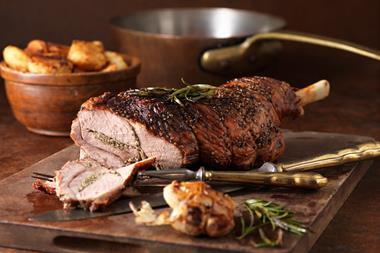The wholesale price of cod is falling as consumers switch to alternative fish species – and it could prompt retail price cuts, boosting sales and putting renewed pressure on stocks.
The average wholesale cod price across Europe has fallen 7.3% year-on-year to £3,411/tonne, according to new figures by Mintec.
Given the fragility of cod stocks and the increase in the price of fuel and other raw materials over the past 12 months, some experts had been predicting a price rise. However, demand for cod has fallen as people switch to alternative, more sustainable species such as pollack.
Demand has also been hit by a massive increase in the price of cod in recent years, with the fish approaching the so-called choke price, whereby demand plummets as prices become too high.
“Although supply is stable or down and costs are up, which would put an upward pressure on prices, falling demand has meant that suppliers have had to charge less,” said Professor Callum M Roberts at the environment department of the University of York.
Processors were increasingly sourcing alternative white fish, added Seafish development director Jon Harman. “This is leading to moderation of pressure on cod stocks and a consequent reduction in market prices for cod,” he said.
The impact has already been felt in store. Volume sales of fresh cod fell 3.8% in the 52 weeks to 4 October while value sales were down 1.7% [Nielsen]. However, if wholesale price decreases were translated to retail that could stimulate demand, putting pressure back on stocks.
“Most consumers buy on price, particularly given the current economic climate,” pointed out the chief executive of Seafood Scotland, Libby Woodhatch.
Although North Sea cod stocks are beginning to recover, they are still a long way from reaching sustainable levels and last year Iceland, which is an important supplier of cod to the British market, slashed its cod quotas due to concerns over stock levels.
Given the fragility of cod stocks and the increase in the price of fuel and other raw materials over the past 12 months, some experts had been predicting a price rise. However, demand for cod has fallen as people switch to alternative, more sustainable species such as pollack.
Demand has also been hit by a massive increase in the price of cod in recent years, with the fish approaching the so-called choke price, whereby demand plummets as prices become too high.
“Although supply is stable or down and costs are up, which would put an upward pressure on prices, falling demand has meant that suppliers have had to charge less,” said Professor Callum M Roberts at the environment department of the University of York.
Processors were increasingly sourcing alternative white fish, added Seafish development director Jon Harman. “This is leading to moderation of pressure on cod stocks and a consequent reduction in market prices for cod,” he said.
The impact has already been felt in store. Volume sales of fresh cod fell 3.8% in the 52 weeks to 4 October while value sales were down 1.7% [Nielsen]. However, if wholesale price decreases were translated to retail that could stimulate demand, putting pressure back on stocks.
“Most consumers buy on price, particularly given the current economic climate,” pointed out the chief executive of Seafood Scotland, Libby Woodhatch.
Although North Sea cod stocks are beginning to recover, they are still a long way from reaching sustainable levels and last year Iceland, which is an important supplier of cod to the British market, slashed its cod quotas due to concerns over stock levels.









No comments yet